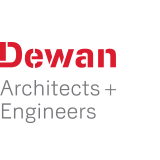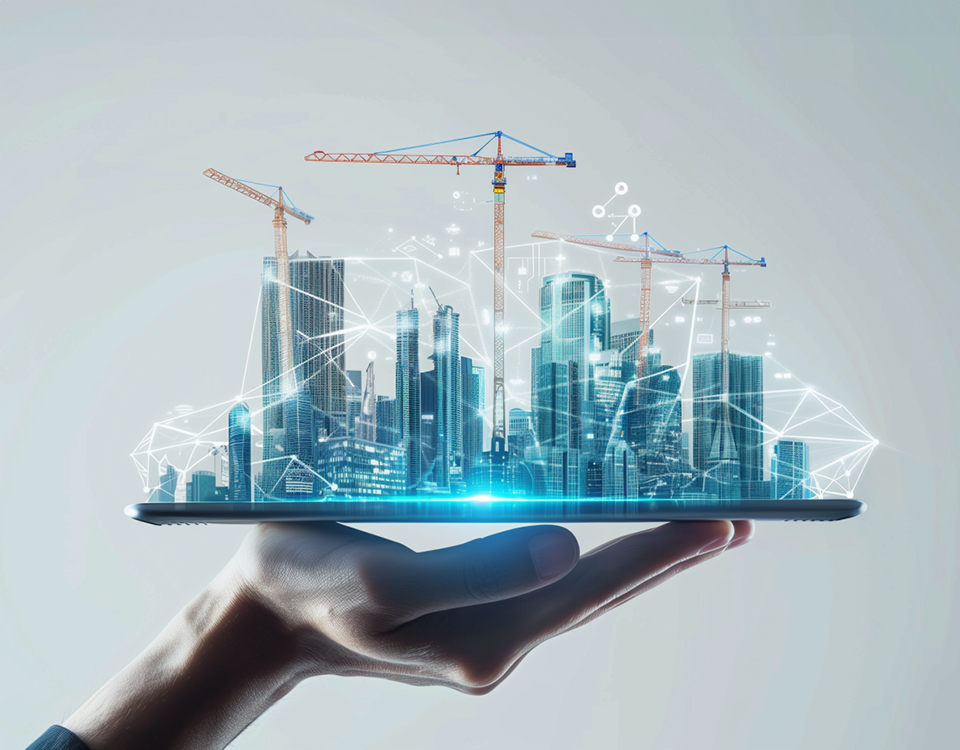In the dynamic fields of construction and architecture, technology has been accelerating at a faster pace, with Artificial Intelligence (AI) playing a pivotal role. Today, AI is no longer relegated to the sidelines; it drives innovation and efficiency to the forefront of our practices.
At Dewan Architects + Engineers, with the aid of the Metaverse Architecture Department (MAD), our journey began by utilising Midjourney AI to generate mood images and visual representations that helped us convey the design intent to our clients. Now, with the integration of AI and digitalisation, we have more opportunities than ever to elevate our processes. It’s not just about adopting new tools anymore; AI is fundamentally reimagining how we design, construct, and maintain our built environments.

How AI is revolutionising design?
At Intercon, within our field, we believe AI’s true potential lies in its capacity to elevate and streamline our design processes in our studio. With AI-driven tools capable of analysing factors like site conditions, environmental influences, local regulations, and client preferences, we can create design solutions that are both aesthetic and functional. By relying on algorithms to anticipate outcomes and tackle intricate design dilemmas, we can accomplish tasks that would traditionally demand far more time if handled manually.
Consider the use of generative design software like Grasshopper or Dynamo, which, when enhanced with AI capabilities, can generate thousands of design alternatives based on specified parameters. Similarly, the incorporation of AI in Revit allows architects to input design prompts with a single click, significantly reducing the time spent on repetitive tasks. This innovation frees architects and designers to focus more on design and research rather than exhaustive documentation, as AI takes over these labour-intensive tasks and necessitates only brief reviews. This will be especially critical for large-scale projects as it allows architects and designers to handle projects of a greater volume of projects and ensures timely delivery.
Streamlining collaboration
Implementing AI extends beyond individual creativity, enhancing the collaborative process integral to successful projects. I believe that platforms like Building Information Modelling (BIM) integrated with AI not only centralise project data but also update it in real-time. By centralising project data and updating it in real-time, all team members, from engineers to contractors, can work from the same accurate information, minimising the chances of errors. Such technological tools showcase how communication and coordination can be significantly improved in all layers of a construction project with the help of AI.
Predictive insights in project management
AI’s influence extends beyond just design to project management. By analysing patterns in data from previous projects, AI can forecast potential delays or budgetary issues, allowing project teams to mitigate risks before they impact the timeline or costs. After construction, these predictive powers continue to serve and learn from our previous issues, identifying maintenance needs before they become critical. This not only prolongs the life of a building but also optimises the use of resources, a testament to AI’s role in post-construction life cycle management.
AI and sustainable development

Sustainability is a cornerstone of modern architecture, and AI is making a significant impact here, too. Through sophisticated simulations and energy modelling, AI can simulate various scenarios, helping us choose options that balance environmental impact with cost and durability. As global sustainability standards become stricter and client demands for green buildings grow, AI’s ability to improve resource efficiency will be invaluable. It’s not just about meeting regulations; it’s about leading the charge in eco-friendly design.
Promises and pitfalls: Is the digital leap worth it?
While AI offers exciting prospects, its integration into conventional practices presents several hurdles. Concerns such as data security, initial technology expenses, and adapting to new software are significant. Additionally, embracing these changes necessitates a cultural shift within industries, potentially leading to job displacement and the emergence of new roles. Furthermore, transitioning to AI often requires acquiring new skills, posing a substantial challenge for firms deeply entrenched in traditional methods.
Looking ahead
The integration of AI in the field of construction is not merely a trend but a significant evolution in the way we create. As professionals committed to innovation and excellence, it is essential to utilise and explore this technology to stay at the forefront of our industry. Therefore, we have recently established, through our Metaverse Architecture Department, a research and development capability focused on concentrating on AI tools and their implementation in the office, ensuring that we remain leaders in this transition.
As we move forward, it becomes increasingly clear that AI doesn’t replace us; rather, it augments our ability to imagine and construct the world around us and unlock the capacity problem we already have in our profession. The future urges us to build with greater intelligence, and with AI, we are well-equipped to answer that call.
By Mohammed Adib, Chief Design Officer


